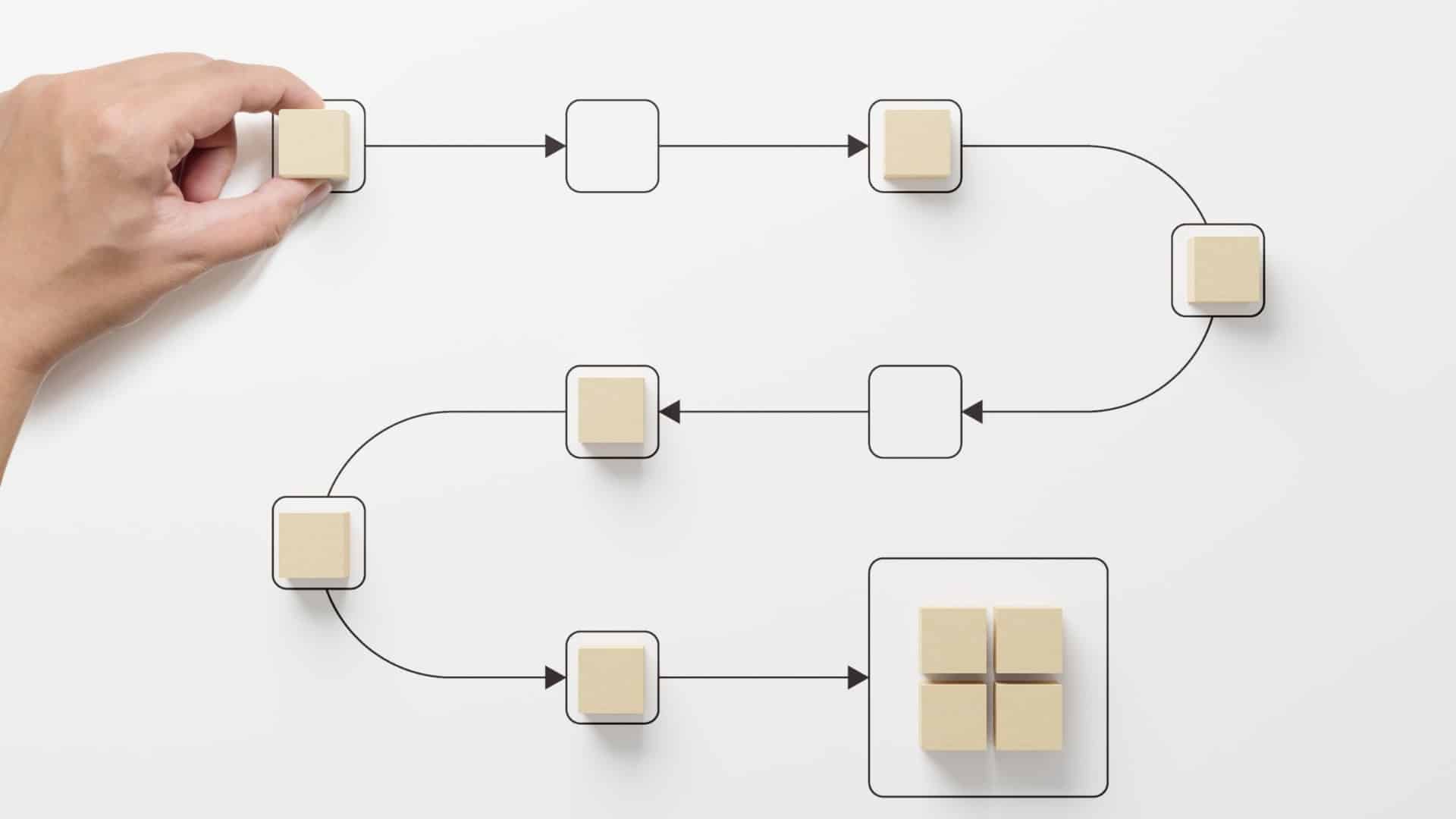Why Content Workflows Matter in Today’s Digital World

Every marketing team, creative agency, and content-driven business relies on a structured content workflow to manage the fast-paced cycle of content creation, approval, and distribution. A content manager plays a crucial role in overseeing and coordinating various stages of this process, including approving edits, managing editorial calendars, and ensuring that the content aligns with the overall strategy and quality standards. But without an efficient system in place, content projects often face:
- Missed deadlines due to slow approval processes
- Inconsistent branding caused by teams using outdated assets
- Lost productivity as employees waste time searching for files
- Delayed campaigns due to bottlenecks in content review and approvals
Solution: A well-structured content workflow powered by a digital asset management (DAM) system ensures that businesses can streamline content production, maintain brand consistency, and accelerate time-to-market.
Let’s break down how to optimize your content workflow—and why ASMBL’s DAM platform is essential for keeping content teams aligned.
What Is a Content Workflow?
A content workflow is the step-by-step process that moves content from concept to publication—ensuring that every piece of content is strategically planned, created, reviewed, and distributed efficiently.
An effective content workflow process ensures that everyone knows their role, deadlines are met, and content quality remains high, which is essential for achieving content marketing goals.
Key Steps in a Content Workflow
Planning – Define content goals, target audience, and distribution channels
Creation – Develop content (writing, designing, video production, etc.)
Review & Approval – Edit, refine, and approve content before publication
Distribution – Publish across websites, social media, and marketing channels
Performance Tracking – Analyze engagement, optimize, and repurpose content
Pro Tip: Store and manage all content assets inside a DAM system like ASMBL—so teams always have access to the right files, at the right time.
Content workflow software enables marketing teams to streamline their content management processes, resulting in increased output and reduced chaos.

Benefits of a Content Workflow
A well-defined content workflow offers numerous advantages for content marketing teams, transforming the way they create and manage content. Here are some key benefits:
- Improved Efficiency: A structured content workflow streamlines the entire content creation process, reducing the time and effort required to produce high-quality content. By having a clear roadmap, teams can avoid unnecessary delays and stay on track.
- Increased Productivity: Automating repetitive tasks and minimizing manual labor allows team members to focus on more strategic and creative aspects of content creation. This boost in productivity enables marketing teams to produce more content without compromising quality.
- Enhanced Collaboration: A content workflow promotes seamless collaboration among team members, ensuring everyone is on the same page. By clearly defining roles and responsibilities, it fosters better communication and teamwork, leading to more cohesive and effective content.
- Better Content Quality: With a content workflow in place, content undergoes thorough review and approval processes, ensuring it meets the required standards. This reduces errors and inconsistencies, resulting in higher quality content that resonates with the target audience.
- Increased Consistency: Consistency is key in content marketing. A content workflow helps maintain a consistent tone, style, and messaging across all content pieces, reinforcing the brand’s identity and building trust with the audience.
- Reduced Costs: By optimizing resources and minimizing waste, a content workflow helps reduce costs associated with content creation. Efficient processes mean less time and money spent on revisions and corrections.
- Improved Customer Experience: A well-executed content workflow enables teams to create content that truly resonates with their target audience. By delivering relevant and engaging content, brands can enhance customer engagement and loyalty.
The Risks of Working Without a Content Workflow
Operating without a content workflow can lead to several significant risks that can hinder a brand’s content marketing efforts:
- Inefficient Content Creation: Without a clear process, content creation can become slow and cumbersome. Teams may struggle with disorganization, leading to delays and a lack of productivity.
- Poor Content Quality: In the absence of a structured workflow, content may not undergo proper review and approval, resulting in subpar quality. This can negatively impact the brand’s reputation and credibility.
- Inconsistent Branding: Without a content workflow, maintaining a consistent brand voice and messaging becomes challenging. Inconsistent branding can confuse the audience and weaken the brand’s identity.
- Wasted Resources: Inefficiencies and disorganization can lead to wasted resources, both in terms of time and money. Teams may spend unnecessary effort on redundant tasks, increasing overall costs.
- Missed Deadlines: A lack of a defined workflow can result in missed deadlines, delaying campaigns and causing lost opportunities. Timely content delivery is crucial for staying relevant and competitive.
- Lack of Collaboration: Without a content workflow, team members may not work together effectively. Poor communication and collaboration can lead to misunderstandings and a lack of cohesion in content projects.
- Inability to Scale: As content demands grow, scaling production without a workflow becomes difficult. A structured workflow is essential for managing increased content volume and maintaining quality.
Components of a Content Workflow
A comprehensive content workflow consists of several key components that work together to ensure efficient and effective content creation:
- People: The team members involved in the content creation process, including writers, editors, designers, and project managers. Each person plays a crucial role in bringing content to life and ensuring it meets the desired standards.
- Processes: The steps involved in the content creation process, from planning and creation to review, approval, and publishing. Clearly defined processes help streamline the workflow and ensure consistency.
- Tasks: The specific tasks required to complete each stage of the content creation process, such as research, writing, editing, and design. Breaking down the workflow into manageable tasks helps teams stay organized and focused.
- Tools: The software and technology used to support the content creation process, including project management tools, content management systems, and design software. The right tools can significantly enhance efficiency and collaboration.
- Templates: Standardized templates, such as content calendars, editorial calendars, and style guides, ensure consistency in content creation. Templates provide a framework that helps maintain brand standards and streamline the workflow.
- Metrics: The metrics used to measure the success of the content creation process, including engagement metrics, conversion metrics, and ROI metrics. Tracking these metrics helps teams evaluate performance and make data-driven improvements.
By understanding and implementing these components, content teams can create a well-structured workflow that enhances productivity, quality, and overall content marketing success.
Real-World Examples: Content Workflows in Action
E-Commerce Brands: Speeding Up Product Content Creation
Challenge: Managing and updating thousands of product images, descriptions, and videos for an online store.
Solution: A DAM-powered content workflow ensures marketing and product teams can easily update and distribute product content across websites, ads, and e-commerce platforms. Developing streamlined workflows for creating and managing website content effectively not only speeds up the planning and production but also ensures that the content produced is valuable, high-quality, and on-brand, involving multiple team members in the process.
Example: A global fashion retailer uses ASMBL’s DAM to organize product images, automate approvals, and speed up content distribution across regional markets.
Creative Agencies: Managing Multi-Client Campaigns
Challenge: Agencies handle multiple client campaigns simultaneously, requiring efficient content workflows.
Solution: A DAM system helps teams store, categorize, and quickly access branding materials, templates, and campaign assets for each client. Using visual aids like editorial calendars can further enhance content strategy by helping teams plan their marketing projects effectively, keep track of upcoming tasks, and streamline the content creation process.
Example: A creative agency uses a DAM-powered workflow to manage client projects, approve assets faster, and ensure every campaign follows brand guidelines.
Media Companies: Optimizing Video Content Workflows
Challenge: Managing a massive library of video content while ensuring quick access for editors and marketing teams.
Solution: A DAM system automates video tagging, search, and content versioning, making it easy to repurpose and distribute media. This structured process is crucial for creating and managing digital marketing content, as it enhances efficiency and ensures all content produced is high-quality, relevant, and aligns with brand standards.
Example: A sports media brand uses ASMBL’s DAM to instantly find, edit, and republish highlight clips across digital channels.
How a DAM System Improves Content Workflows
Without a DAM system, content teams face: Scattered content across multiple storage locations Slow approval processes delaying marketing campaigns Inconsistent messaging due to teams using outdated materials
How ASMBL’s DAM-Powered Content Workflow Helps: Centralized content library – Store and organize all creative assets in one place AI-Powered Search & Tagging – Instantly find the right files with smart metadata Automated Approval Workflows – Speed up content reviews and publishing Version Control – Ensure teams only use the latest, approved content Role-Based Access – Keep brand assets secure and control who can edit or download files
Lesson: A DAM system like ASMBL eliminates content chaos, enabling marketing and creative teams to work smarter, faster, and more efficiently by streamlining the content management workflow. This structured process involves tasks that a team follows to efficiently create, manage, and publish content, ensuring timely delivery and accountability.
Best Practices for Optimizing Content Workflows with DAM
Define Clear Content Approval Workflows
Automate approvals to eliminate bottlenecks and speed up content production by implementing a clear approval workflow. Ensure brand managers have final sign-off before content is published.
Organize Assets with Metadata & Smart Tagging
- Categorize assets by campaign, region, and content type. Utilize workflow software to streamline content management processes by tracking, controlling, and automating tasks. Make it easy for teams to find the exact files they need—instantly.
Streamline Multi-Channel Content Distribution
Ensure content is formatted and ready for social, web, ads, and internal platforms, making it effective and usable across multiple platforms.
Automate content delivery to different marketing channels
Track Asset Performance & Optimize Workflows
Monitor which content performs best across campaigns Use insights to refine workflows and improve content effectiveness
Utilize content workflow software to track progress, define roles, and automate workflows. This software helps streamline the content creation process, enhancing overall efficiency and catering to the varying needs of different content types and team structures.

Why ASMBL Is the Best DAM for Content Workflow Management
If your content team struggles with scattered assets, slow approvals, or inconsistent branding, ASMBL provides the ultimate DAM solution for content workflow automation. ASMBL’s content workflow software enables marketing teams to streamline their content management processes, resulting in increased output and reduced chaos.
What Sets ASMBL Apart?
- AI-Powered Search & Tagging – Instantly find and organize brand assets
- Automated Approval Workflows – Speed up content creation and publishing
- Version Control & Approvals – Ensure teams always use the latest, brand-approved content
- Secure Access Controls – Prevent unauthorized asset use or modifications
- Seamless Integrations – Works with Adobe, Canva, WordPress, and marketing automation tools
With ASMBL’s DAM, content teams can manage projects faster, stay aligned, and execute marketing campaigns with complete consistency.
The Future of Content Workflow: Why Brands Must Act Now
A disorganized content workflow slows down marketing efforts, weakens brand consistency, and delays campaign execution. Companies that fail to streamline content production risk losing relevance in the digital-first world.
- A DAM-powered content workflow ensures that branding, messaging, and content creation stay aligned—boosting efficiency and accelerating marketing success. An effective content workflow determines the sequence of steps needed to request, source, create, review, approve, and deliver content, which is crucial for optimizing engagement and achieving marketing objectives.
- If your content team struggles with slow approvals, scattered assets, or inconsistent branding, it’s time to upgrade.
- Discover how ASMBL’s DAM helps businesses centralize, manage, and optimize content workflows.


